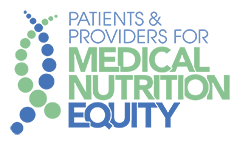State-based Laws Provide a Flawed Patchwork of Coverage For Medical Nutrition
The Medical Nutrition Equity Act will provide a Federal “floor” of coverage to ensure that no one falls through the thousands of loopholes created by state laws, which may limit coverage based on the following:
- Insurance type: State laws do not apply to any self-insured private plans (~40% of employers with more than 100 employees) due to the ERISA exemption
- Age: States may limit coverage to only young children, or only pregnant women, leaving older children and adults who have life-long conditions with no coverage whatsoever
- Income: States may limit benefits based on income. Often patients make too much to qualify for assistance under public insurance programs, but can’t afford to pay thousands of dollars for medical nutrition each year
- Diagnosis: Some states cover only a single inborn error of metabolism, while others are more expansive but still limited
- Nutritional Delivery Method: States may limit coverage based on how medical nutrition is administered, covering tube feedings but not oral formula, even when a patient can and wants to take the formula orally. This can lead to to unnecessary, invasive, risky, and expensive surgical procedures just to obtain insurance coverage for medical nutrition
State-by-state coverage based on data from the National Coordinating Center for Regional Genetics Networks’ 2016 report in cooperation with the Catalyst Center, updated July 2017 and the National Organization for Rare Disorders (NORD) State Report Card 2024.
